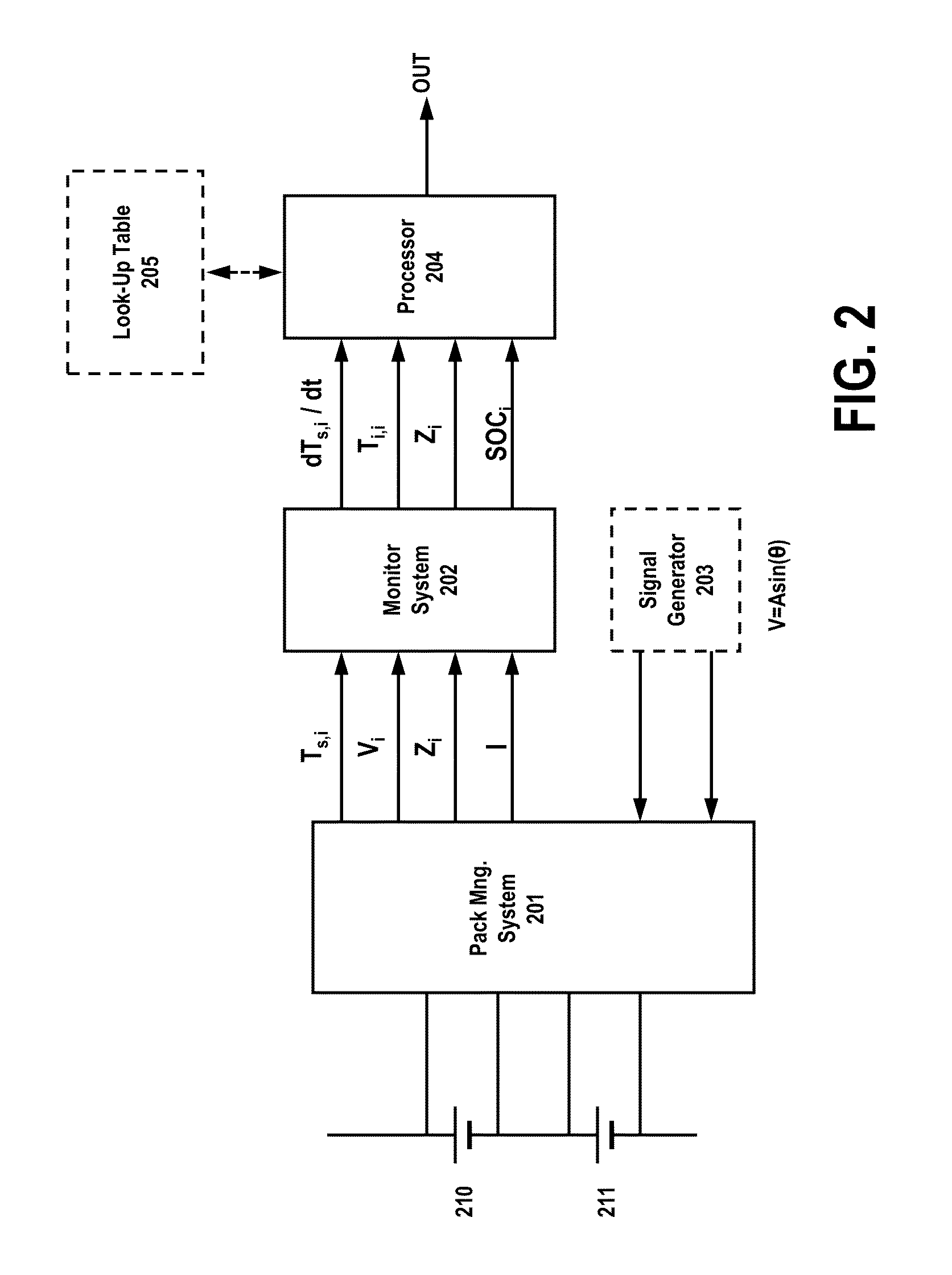Advanced battery early warning and monitoring system
a battery early warning and monitoring system technology, applied in the field of advanced battery early warning and monitoring systems, can solve the problems of reducing the specific energy and energy density of a battery pack, oversized battery systems, and the current application of libs as energy storage systems in evs and hevs, so as to reduce the barriers to market adoption and cost saving
- Summary
- Abstract
- Description
- Claims
- Application Information
AI Technical Summary
Benefits of technology
Problems solved by technology
Method used
Image
Examples
Embodiment Construction
[0032]FIG. 1 illustrates an exemplary embodiment of a system 100 for detecting battery operating conditions and processing the conditions to calculate and / or predict a failure condition in at least one of a plurality of batteries. Under certain conditions, relays may be necessary to control voltage and current being delivered to the batteries. As illustrated in FIG. 1, relays 103 and 106 may be used to control the input of voltage to battery modules 107-109, along with pre-charge relay 104. When initially connecting a battery, there may be an inrush of current as the load is charged up to the battery voltage. With large batteries (with a low source resistance) and powerful loads, the inrush current can easily peak to dangerous levels. Pre-charge relay 104 (or an equivalent circuit) can limit the inrush current without necessarily limiting the operating current.
[0033]In addition to relays 103-104 and 106, a sensor 105 may be used to detect incoming current, and to provide the sensed ...
PUM
 Login to View More
Login to View More Abstract
Description
Claims
Application Information
 Login to View More
Login to View More - R&D
- Intellectual Property
- Life Sciences
- Materials
- Tech Scout
- Unparalleled Data Quality
- Higher Quality Content
- 60% Fewer Hallucinations
Browse by: Latest US Patents, China's latest patents, Technical Efficacy Thesaurus, Application Domain, Technology Topic, Popular Technical Reports.
© 2025 PatSnap. All rights reserved.Legal|Privacy policy|Modern Slavery Act Transparency Statement|Sitemap|About US| Contact US: help@patsnap.com



